The Brain’s cognitive map
In a classical experiment in the 1940ies, Edvard Tolman taught rats to perform the following maze:
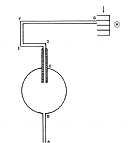
Rats had to learn to run from A to H in order to get food.
After the rats have learnt the task, the maze was replaced by the following sunburst maze:
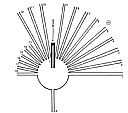
Thus the original running direction from the round room was blocked, such that the rat had to run from A to H using a diagonal shortcut (through corridor no. 5). Many of the rats learnt the task, although they have never visited that corridor before (Tolman, 1948). This and similar experiments suggested that there is a cognitive map in the rats head, which helps them find their way in unfamiliar routes.
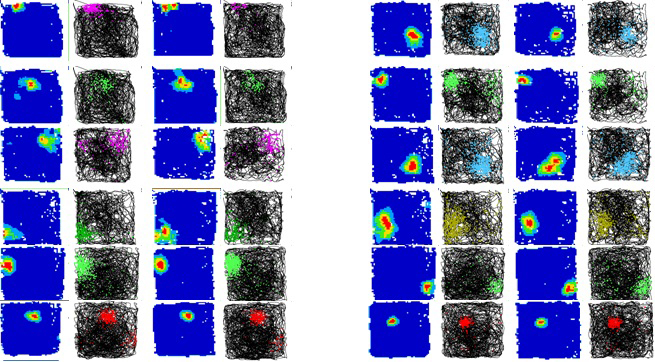
Figure: Different place cells respond in different parts of a 1.5×1.5 m box, as the rat is running around the environment. The readout from these cells can be used by the brain in order to form a cognitive map of the environment.
In recent years, another cell type has been discovered, which codes for the position of the rat in the environment, called “grid cell” (Hafting et al., 2005). Grid cells fire in a repetitive pattern in given places in the environment, forming what seems like an internal GPS system within the brain.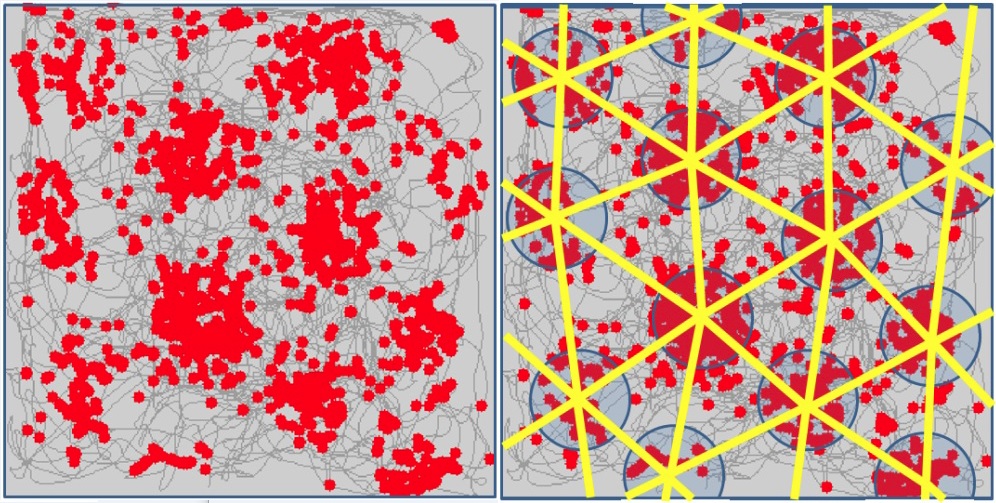
Figure: (left) While running in the box (The rat’s trajectory is shown as a grey line in the background), the grid cell fires at specific locations (red dots), which form a hexagonal grid (right).
While place cells are found in the hippocampus, grid cells and found, together with head-direction cells and with border cells, in the entorhinal cortex, which is the main input region from the cortex into the hippocampus.
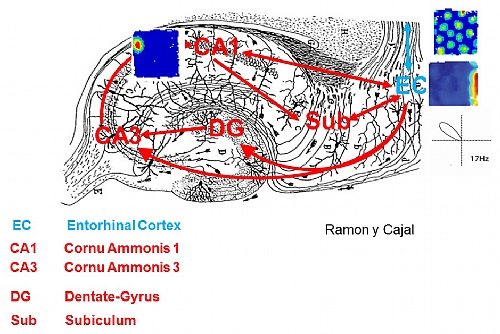
Figure The main connection between different regions of the hippocampal formation. While place cells can be found mostly in CA3 and CA1, the entorhinal cortex (EC) contains grid cells, border cells and head-direction cells.
It is not known how grid cells are formed, however the hexagonal pattern is most likely a solution to the same time of optimization problem which causes beehives to be hexagonal and oranges to be packed in hexagons


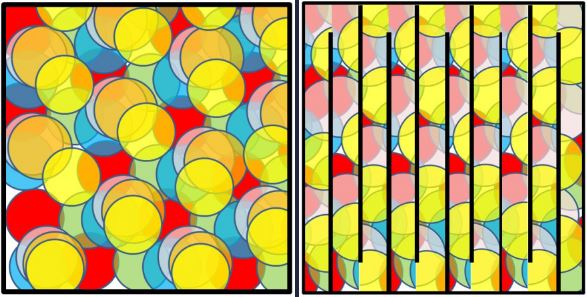
Figure: (left) Different grid cells (coded here in different colors) code for different positions within the environment, such that the animal can determine its position by the subset of grid cells which fired at a specific position. In a complex multiple-compartment environment (right), the cognitive map breaks up in to multiple pieces (Derdikman et al., 2009; Derdikman & Moser 2010).